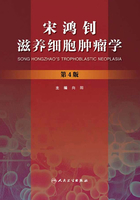
上QQ阅读APP看书,第一时间看更新
参考文献
1.计鸣良, 赵峻. 家族性复发性葡萄胎的分子遗传学及致病基因研究进展. 中华妇产科杂志, 2015,(8): 629-631.
2.Eysbouts YK, Bulten J, Ottevanger P B, et al. Trends in incidence for gestational trophoblastic disease over the last 20 years in a population-based study. Gynecol Oncol, 2016, 140 (1): 70-75.
3.Melamed A, Gockley AA, Joseph NT, et al. Effect of race/ethnicity on risk of complete and partial molar pregnancy after adjustment for age. Gynecol Oncol, 2016, 143 (1):73-76.
4.Brown J, Naumann RW, Seckl MJ, et al. 15years of progress in gestational trophoblastic disease: Scoring, standardization, and salvage. Gynecol Oncol, 2017, 144(1): 200-207.
5.Nguyen NMP, Khawajkie Y, Mechtouf N, et al. The genetics of recurrent hydatidiform moles: new insights and lessons from a comprehensive analysis of 113 patients. Mod Pathol, 2018, 31 (7): 1116-1130.
6.Sanchez-Delgado M, Martin-Trujillo A, Tayama C, et al. Absence of Maternal Methylation in Biparental Hydatidiform Moles from Women with NLRP7 Maternal-Effect Mutations Reveals Widespread Placenta-Specific Imprinting. PLoS Genet, 2015, 11 (11): e1005644.
7.Eagles N, Sebire NJ, Short D, et al. Risk of recurrent molar pregnancies following complete and partial hydatidiform moles. Hum Reprod, 2015, 30 (9): 2055-2063.
8.Nguyen NMP, Ge ZJ, Reddy R, et al. Causative Mutations and Mechanism of Androgenetic Hydatidiform Moles. Am J Hum Genet, 2018, 103 (5): 740-751.
9.Akoury E, Gupta N, Bagga R, et al. Live births in women with recurrent hydatidiform mole and two NLRP7 mutations. Reprod Biomed Online, 2015, 31 (1):120-124.
10.Suksai M, Suwanrath C, Kor-Anantakul O, et al. Complete hydatidiform mole with co-existing fetus: Predictors of live birth. Eur J Obstet Gynecol Reprod Biol, 2017, 212: 1-8.
11.Savage J, Adams E, Veras E, et al. Choriocarcinoma in Women: Analysis of a Case Series With Genotyping. Am J Surg Pathol, 2017, 41 (12): 1593-1606.